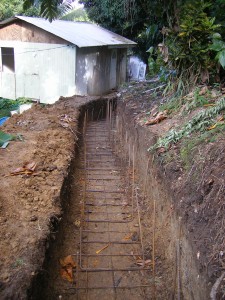Safeguards
Implementation of risk reduction itself carries potential risks. Safeguard policies seek to prevent and mitigate undue harm to people and their environment by providing guidelines for the identification, preparation, and implementation of programs and projects. The effectiveness and development impact of DRR projects can be substantially increased as a result of attention to such policies.
These policies have often provided a platform for the participation of stakeholders in project design (for example, issues such as landownership, proximity of drainage works to existing buildings) and have been an important instrument for building ownership among local populations.
Once teams are in place, stakeholders  identified, and a project logframe developed, safeguard policies should be sourced, developed, and adapted as necessary for the local context; they should then be agreed upon and disseminated. While all those involved in a Mossaic intervention should be aware of safeguard policies, they are of special relevance to the MCU (in its managerial role) and to those involved in construction.
identified, and a project logframe developed, safeguard policies should be sourced, developed, and adapted as necessary for the local context; they should then be agreed upon and disseminated. While all those involved in a Mossaic intervention should be aware of safeguard policies, they are of special relevance to the MCU (in its managerial role) and to those involved in construction.
Practices for safeguards will vary depending on the country, donor agency, and government context. A useful starting point is the Safeguard Policies of the World Bank (2011). The MCU must ensure that the project complies with any relevant safeguards and protocols stipulated by a donor or the government, or dictated by good practice, although it is recognized that formal responsibility for compliance may well lie elsewhere.
